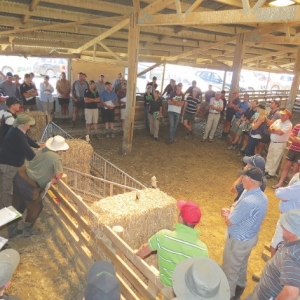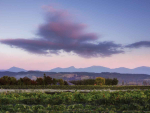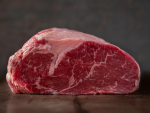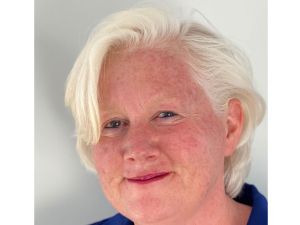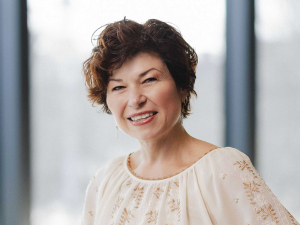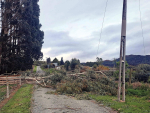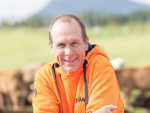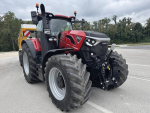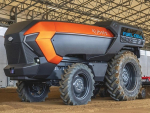Their system is ‘triplet transfer’: a simple term that captures a major and complex management regime.
It started in 2011 when the Freeman’s were invited by Beef + Lamb NZ to become one of twelve demonstration farms around the country. The farms take on new approaches, aiming to break ground for the industry in terms of production and profit. They must be prepared to share results with other farmers but for their trouble get some funding from BLNZ to support the areas of innovation.
The Freeman’s 733ha farm, Ngahere, is 650ha effective. It’s typical Wairarapa hill country except not all their hillsides are brown at present, thanks to a regrassing programme they began about seven years ago. Mixes of chicory, plantain, red and white clover, Italian ryegrass and fescue stand out like oasis in the otherwise parched landscape.
They run about 2500 ewes, buying in replacements and finishing about 8000 lambs. They also run circa 250 cattle, mostly bulls. Looking to do something different to grow their farm business and improve lamb survival rates they hit on a ‘triplet transfer’ system where triplets are reduced to twins, with the lamb removed transferred to a large-scale mothering-on house of single-bearing ewes.
Freeman says the idea was born out of the frustration of high loss rates in triplets no matter how he managed them.
“I began by re-looking at the situation. I thought if people all around the country with better systems than us are not managing to succeed by making that third lamb stay on its mother, how could we do it differently? I started thinking ‘what if we grafted them onto the single mums en mass’.”
While many top farms are trying to reduce triplet births and shying away from use of Androvax, the Freeman’s are embracing tripleting: they see it as the key to producing more liveweight per ewe at weaning.
Ewes are mated to PollDorset/Texel cross rams or straight Texel.
“The Texel has a strong link to survivability and we are wanting fast-growing prime lambs at all weights. The key thing in our system is to make sure we have lambs that are ready to go off mum prime. We often do a lot of lamb trading after Christmas and through the year so they need to be able to prime up rapidly.”
The starting point to the triplet “trial” was injecting the entire ewe flock with Androvax. Scanning revealed 664 of 2500 ewes carrying triplets. Triplet-bearing ewes were split into three mobs, plus a mob of single-bearing ewes – ironically a key part of the system – drafted off.
As no one had done this on such a scale in New Zealand, Freeman was, to some extent, ‘winging it’, he admits. However, they received good advice from Hunterville vet Marty Walshe who’s been working with a similar idea on a smaller scale and provided useful basic data and ideas.
The woolshed and covered yards were set up as the transfer station, with large pens for single-bearing ewes and 16-20 small pens. All lambs waiting to be mothered on were kept out of the shed to keep them out of ear shot of ewes.
“So the ewe drops three lambs out in the paddock and elsewhere a single mum has lambed as well on the same day,” explains Freeman.
“We bring the single ewes and lambs into the shed in batches of 10 – 20 (shed out daily) and put them in groups. The triplet ewe meanwhile has had her lambs and tried to look after all three in the paddock for the first 24 hours. Ideally on day two we go out there and retrieve the weakest one, bring that back to the shed and feed it cow colostrum for one or two feeds.
“Meanwhile the single mum has already arrived at the shed and her lamb has been taken away from her for a short period and she’s waiting with no lamb. Then six hours later or the next morning, every single mum is presented with a new set of twins, and none of them are her own lamb. She may get a set of singles from other single mums or she may get two new triplets. The fact that she doesn’t get her own lamb back massively increases the acceptance rate of these foreign lambs. She can’t pick favourites: that’s the key.”
It’s an approach similar to the nurse-cow system used by some calf rearers, he notes.
Keeping removed single lambs out of earshot is crucial, says Freeman. They’re only brought back into the main shed when they are ready to be paired with a ewe.
Ewes are fitted with ram harnesses and tethered in pens so they can’t lie down making it easy for the lambs to drink. As soon as they’re drinking, there’s no bleating, and both single and triplet lambs proved very quick to accept new mothers. And while it took ewes 6-12 hours to accept the lambs, as soon as the ewe’s milk had passed through the lambs the ewes could smell this and in most cases lamb were accepted, he says.
In this past season’s trial, the Freeman’s reared about 200 triplets and over 80% of the lambs given new mothers survived. The cost of rearing each lamb was $21, including labour (30%) animal health (23%) and feed and shed costs (47%).
Another benefit was faster and greater weightgain by the two lambs left on the original triplet ewe.
Next spring Freeman plans to rear 400 lambs on the transfer system, refining it further. It should return $23,000 profit, he calculates. But for both he and Gretchen, the system goes beyond profit.
“I think we are doing something making sure the extra lambs we produce have a genuine chance of being saved and utilised. This is really important and is a key issue for us and in particular where the industry is going in terms of its genetic gain. A lot of ram breeders are getting feedback from their clients that they don’t want triplets and have reverted back to systems that really only focus on two lambs being born per ewe.

